We used the X-UAV Mini Talon for over two years now and have modified the components to adapt them to our requirements. On October 26th 2019 I have done the first fuselage milling experiment. The idea is to replace the fuselage with an own design and to keep the injection moulded wings and V-Tails. We are quite happy with the flight dynamics of the Talon, so this step not for improving flight perfmance. The reason for changing the fuselage is to improve the water sealing and the construction of the inner compartements. In the past we added for example an inner separation between motor room and electronics but it never fitted exactly. Now we can just leave some material at that place.
The design is done with OnShape CAD software and is available online. I used the following CAM software:
- Deskproto 7.0 for the 3D CAM. This software reads the STL file and produces G-Code.
- Step-Four XpertMILL is the CNC control software
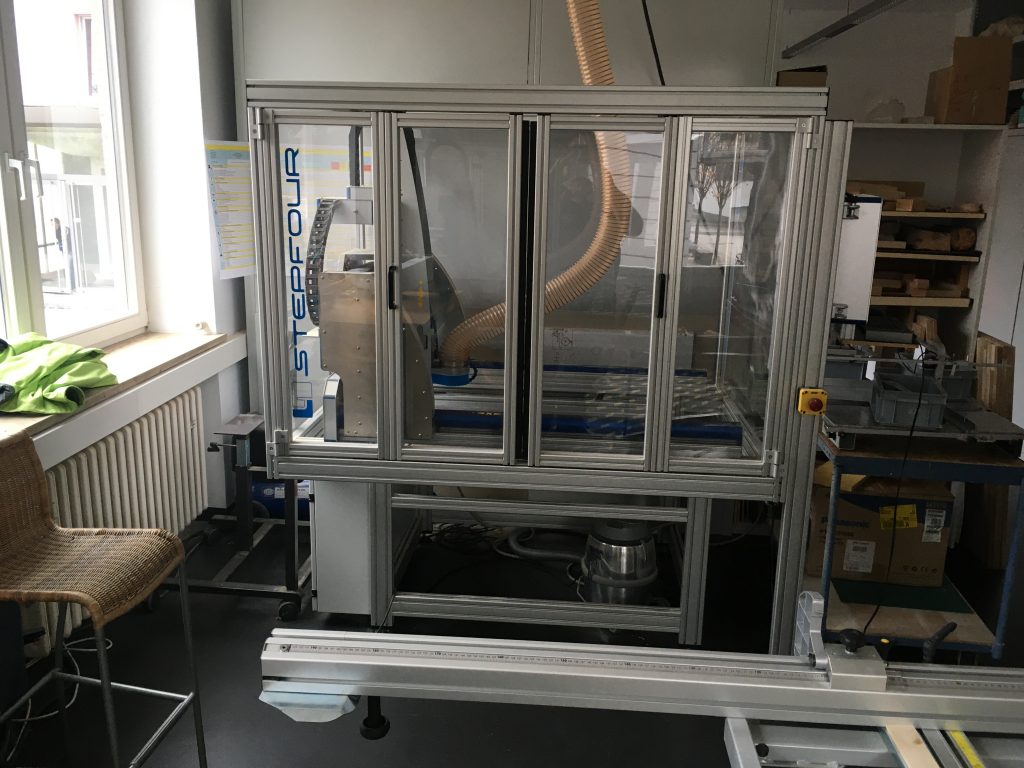
The fuselage is manufactured with the Step-Four XPERT 1000-S mill in the Modellbauwerkstatt of the faculty of architecture and civil engineering.
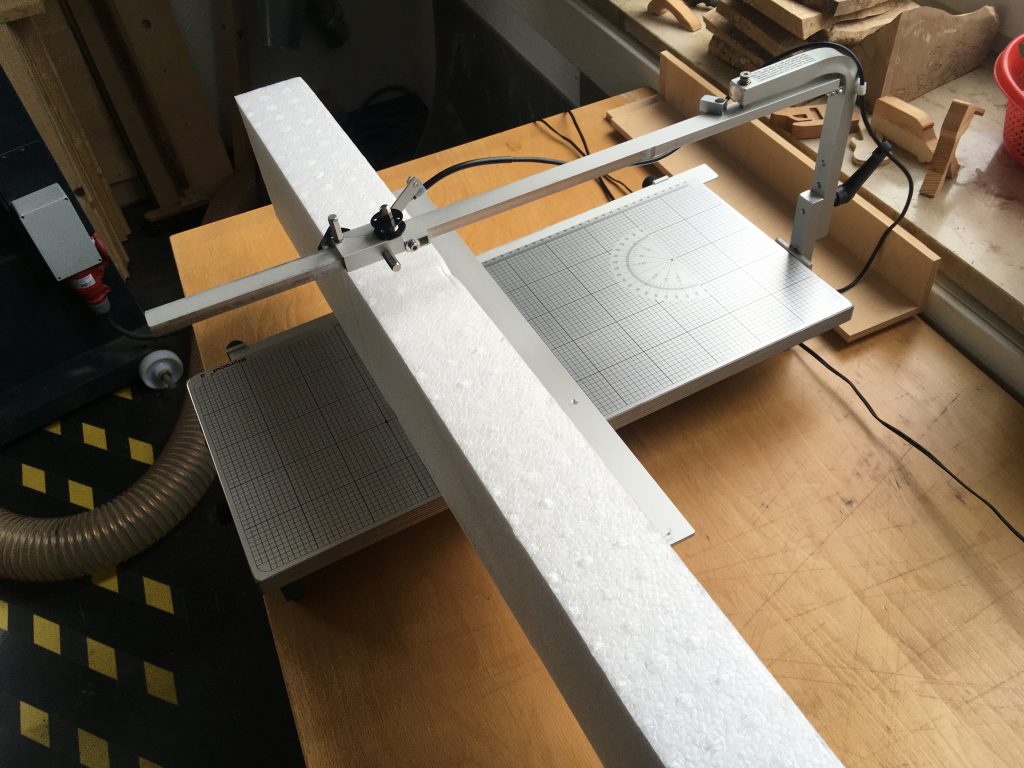
I cut a smaller EPP block with RG20 density with a styrocutter from a large block. The size is 155mm x 75mm x 900mm.
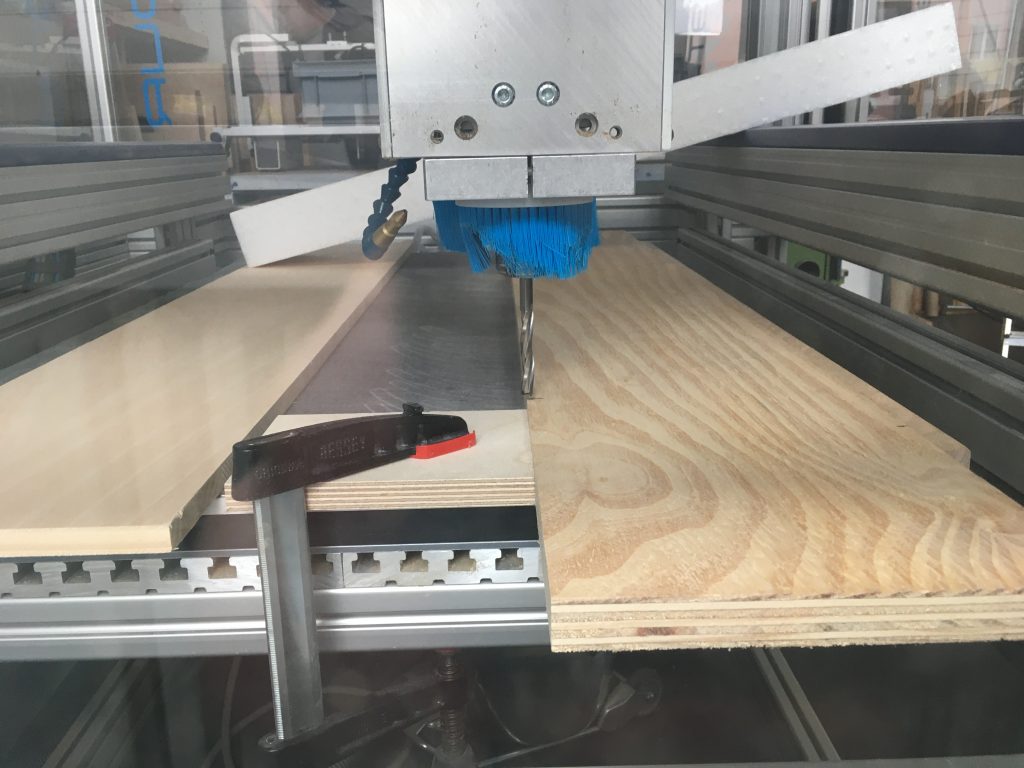
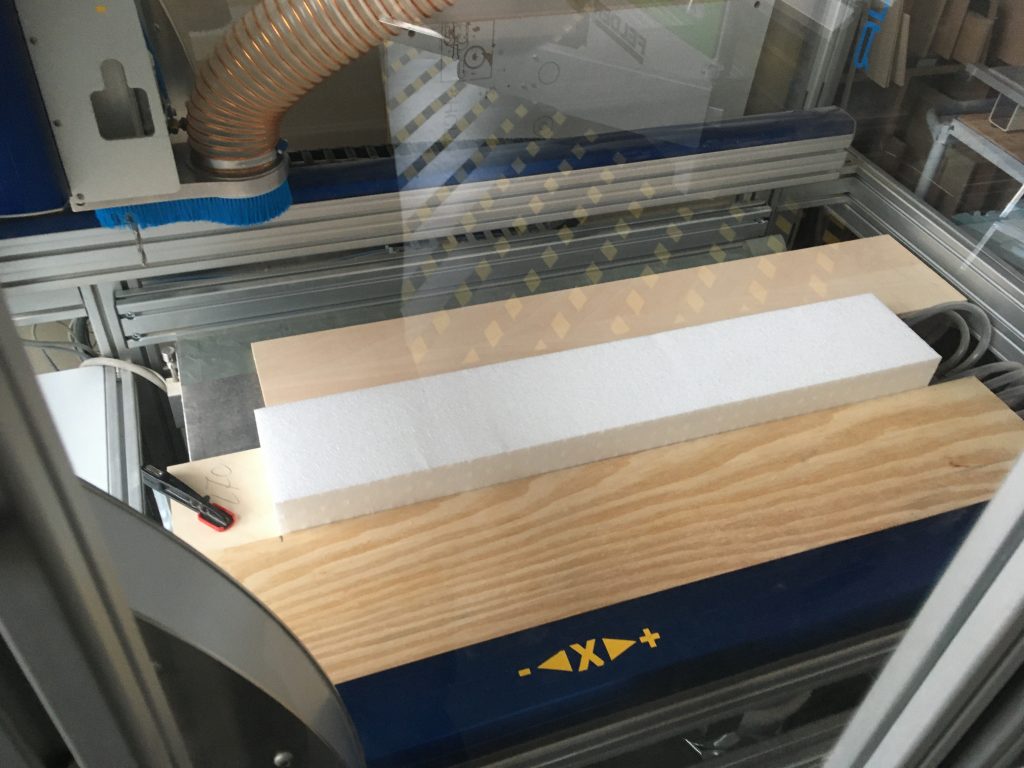
The milling is done in three steps. First the EPP block is flattened to a height of 70mm. This done via 2.5D milling, i.e. it is derived from a 2D sketch rectangle where the height is set in the CAM software. Then the 3D milling process starts and the inner side of the fuselage is milled. After that is finished, the block is turned around and the 3D outer shape is milled. Some more effort is needed to control this turn, because the CAD data expects a block width of 150mm but in fact the width was 155mm. So I manually moved the data in the CAM controller up by 5mm.
The fuselage milling process takes about 3 hours. I depends pretty much on the step width during 3D shape milling. Smaller stepwidth means more precise shape but if you move the drill only 0.2mm in each lane then it takes long. The flattening in the beginning was done with 80% of the drill diameter as stepwidth and only took about 5 minutes.
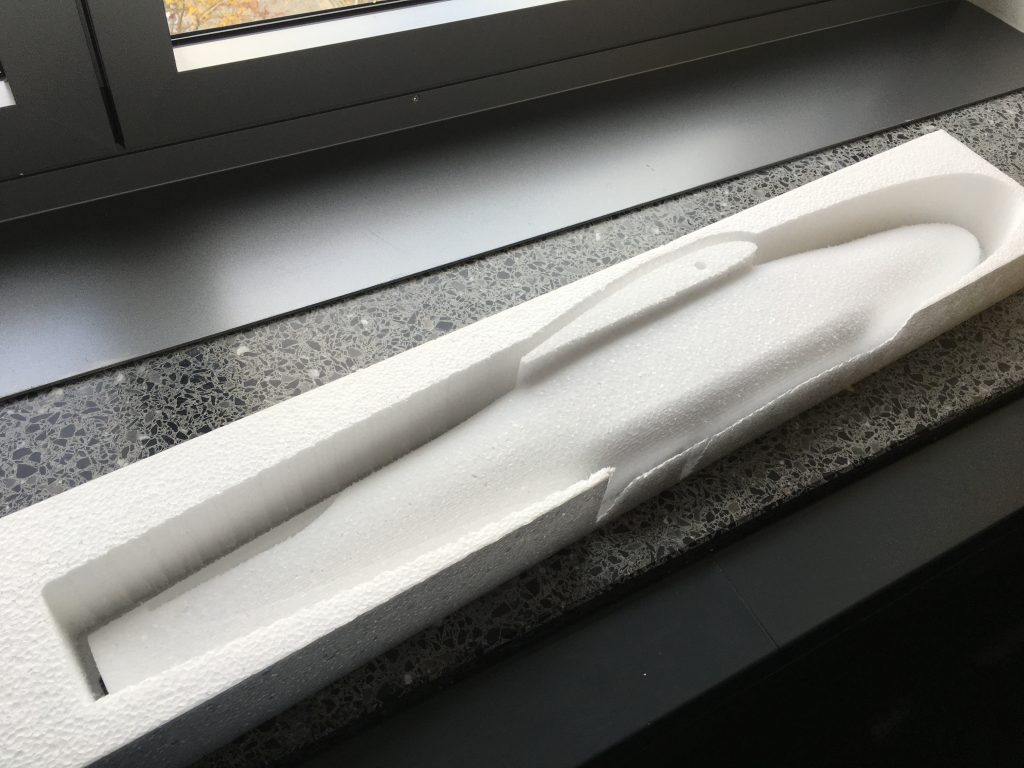

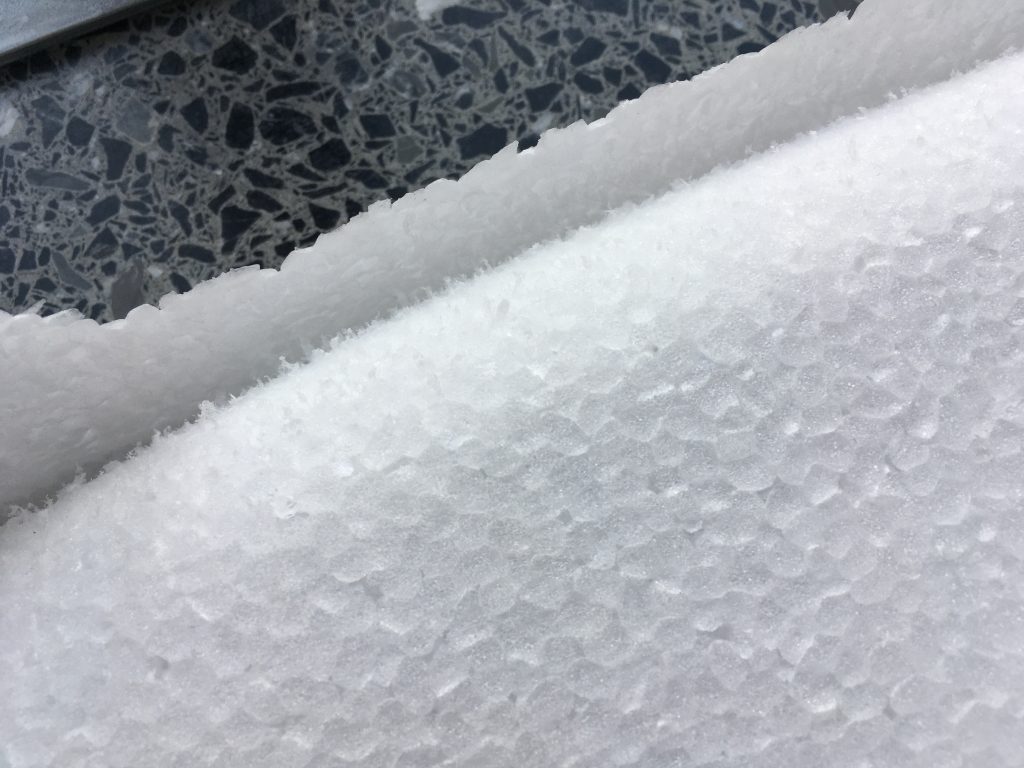
The EPP material is not very stiff compared to the EPO material from the mini talon. The milled fuselage part has a weigth of 30g while the mini talon fuselage part has a weight of 60g.


